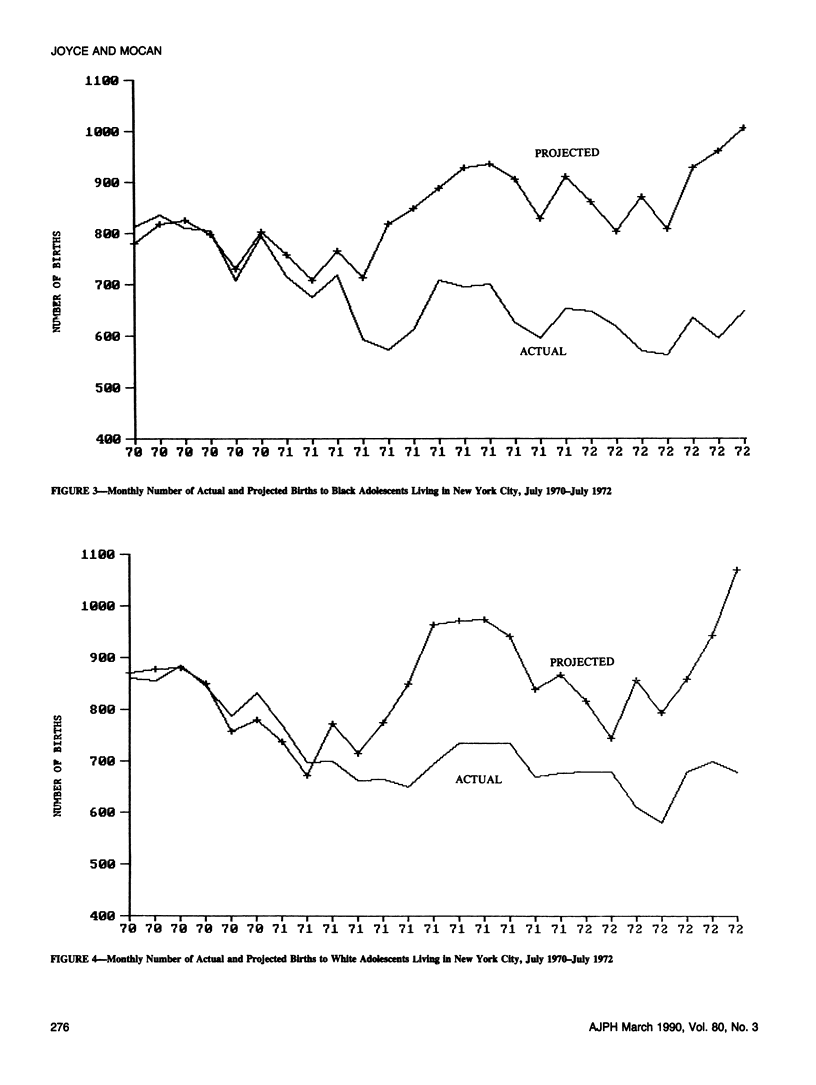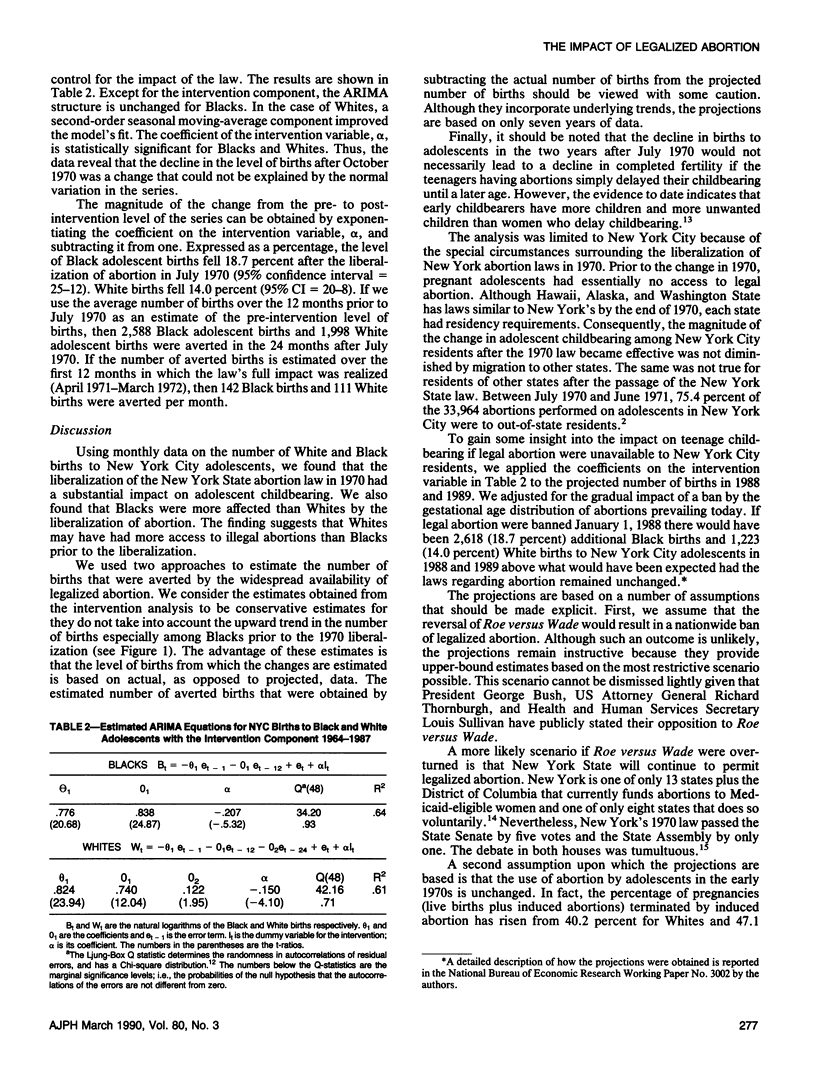Abstract
In this paper we estimate the impact on adolescent childbearing of the liberalization of the New York State abortion law in 1970. Using Box-Jenkins time series techniques to analyze monthly data on the number of births to White and Black adolescents from January 1963 to December 1987, we found that the level of births to Black adolescents living in New York City fell 18.7 percent, approximately 142 fewer births per month, after the law became effective; the level of White births fell 14.1 percent, approximately 111 fewer births per month. Projections based on the fitted model suggest that a ban on legalized abortion today would have a major impact on adolescent childbearing in New York City as well as other parts of the country, although the magnitude of the change would vary according to local conditions.
Full text
PDF





Selected References
These references are in PubMed. This may not be the complete list of references from this article.
- Bauman K. E., Anderson A. E., Freeman J. L., Koch G. G. Legal abortions, subsidized family planning services, and the U.S. "birth dearth". Soc Biol. 1977 Fall;24(3):183–191. doi: 10.1080/19485565.1977.9988281. [DOI] [PubMed] [Google Scholar]
- Burt M. R. Estimating the public costs of teenage childbearing. Fam Plann Perspect. 1986 Sep-Oct;18(5):221–226. [PubMed] [Google Scholar]
- Forrest J. D., Henshaw S. K. What U.S. women think and do about contraception. Fam Plann Perspect. 1983 Jul-Aug;15(4):157–166. [PubMed] [Google Scholar]
- Gold R. B., Guardado S. Public funding of family planning, sterilization and abortion services, 1987. Fam Plann Perspect. 1988 Sep-Oct;20(5):228–233. [PubMed] [Google Scholar]
- Joyce T. The social and economic correlates of pregnancy resolution among adolescents in New York City, by race and ethnicity: a multivariate analysis. Am J Public Health. 1988 Jun;78(6):626–631. doi: 10.2105/ajph.78.6.626. [DOI] [PMC free article] [PubMed] [Google Scholar]
- Koenig M. A., Zelnik M. Repeat pregnancies among metropolitan-area teenagers: 1971-1979. Fam Plann Perspect. 1982 Nov-Dec;14(6):341–344. [PubMed] [Google Scholar]
- Kramer M. J. Legal abortion among New York City residents: an analysis according to socioeconomic and demographic characteristics. Fam Plann Perspect. 1975 May-Jun;7(3):128–137. [PubMed] [Google Scholar]
- Pakter J., O'Hare D., Nelson F., Svigir M. Two years experience in New York City with the liberalized abortion law--progress and problems. Am J Public Health. 1973 Jun;63(6):524–535. doi: 10.2105/ajph.63.6.524. [DOI] [PMC free article] [PubMed] [Google Scholar]
- Quick J. D. Liberalized abortion in Oregon: effects on fertility, prematurity, fetal death, and infant death. Am J Public Health. 1978 Oct;68(10):1003–1008. doi: 10.2105/ajph.68.10.1003. [DOI] [PMC free article] [PubMed] [Google Scholar]
- Sklar J., Berkov B. Abortion, illegitimacy, and the American birth rate. Science. 1974 Sep 13;185(4155):909–915. doi: 10.1126/science.185.4155.909. [DOI] [PubMed] [Google Scholar]
- Tietze C. Two years' experience with a liberal abortion law: its impact on fetility trends in New York City. Fam Plann Perspect. 1973 Winter;5(1):36–41. [PubMed] [Google Scholar]


